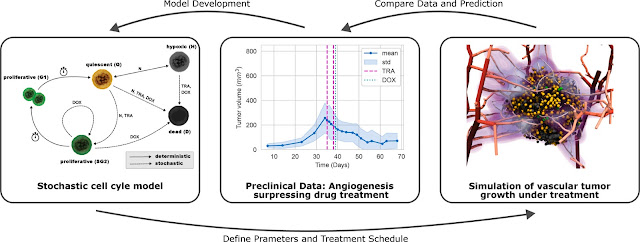Bridging scales: A hybrid model to simulate vascular tumor growth and treatment response
According to the GLOBOCAN collaboration, cancer is one of the deadliest diseases worldwide and was responsible for one out of six fatalities in 2020, and the estimated global economic cost of cancers from 2020 to 2050 is substantial, $25.2 trillion in international dollars (at constant 2017 prices), equivalent to an annual tax of 0.55% on global GDP.
It comes to no surprise that the rate of oncology indication approvals has increased, from January 2000 to October 2022, driven by approvals for targeted therapies, as has the rate of introduction of new therapeutic approaches. If drugs are becoming ever more precise, and the number of potential targets is growing, our ability to aim (to match the treatments and patients and disease evolution) is coming under stress and initiatives the US Cancer Moonshot programme, focusing on high-tech science, big data, and patient-centred care, bear witness to the huge efforts required by precision medicine, to save more lives and to guarantee more disease-free years of survival.
In a recent scientific publication, our Tobias Duswald, and colleagues from the Technical University of Munich, and the University of Texas at Austin, showcase the potential of advancing in silico medicine with the help of BioDynaMo. They demonstrate the development of a model of breast cancer cells over-expressing HER2 receptors, then exposed to a treatment combining standard chemotherapy (Doxorubicin) and monoclonal antibodies with anti-angiogenic properties (Trastuzumab).
Their result qualitatively capture the effects of the combination therapy, as shown when comparing the simulation results with previously published pre-clinical data.
Congratulations to the team for demonstrating once more the terrific potential of BioDynaMo for in-silico medicine!!
Read the manuscript here




Comments
Post a Comment